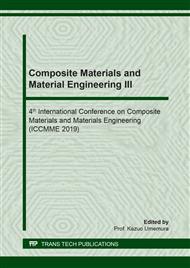p.385
p.391
p.397
p.404
p.410
p.416
p.424
p.430
p.436
Utilization of Brine Sludge in Controlled Low Strength Materials (CLSM)
Abstract:
Controlled low-strength materials (CLSM) have begun to apply in a lot of countries because CLSM could distribute randomly in complex sites. Manufacturing from chlor-alkali industry, the brine sludge was used to replace the composition in CLSM for resource application. In this study, the mix composition of brine sludge replaced only the fine aggregates or all of the aggregates. Examining the suitable composition, the ball drop test and the compressive strength test were carried out. The ball drop test was applied to determine the readiness of the CLSM to accept loads prior, and the bearing capacity at different ages were measured by the compressive strength test. The results of the ball drop test in different replacements was 7 - 11.5 cm. The replacement of fine aggregates satisified the rule of CLSM. Replacing all of the aggregates, the mixtures were over 7.6 cm, which meant that the early strength at 1 day were not sufficient. The value of compressive strength at 28 days was 1.709 - 21.37 kgf/cm2, conforming the requirement of CLSM. Overall, the mixture which replaced the fine aggregates met all the specified values of CLSM. In particular, the composition of coarse aggregates reduce to 250 kg/m3, the utalization of the brine sludge could be the most.
Info:
Periodical:
Pages:
436-441
Citation:
Online since:
May 2019
Authors:
Price:
Сopyright:
© 2019 Trans Tech Publications Ltd. All Rights Reserved
Share:
Citation:


